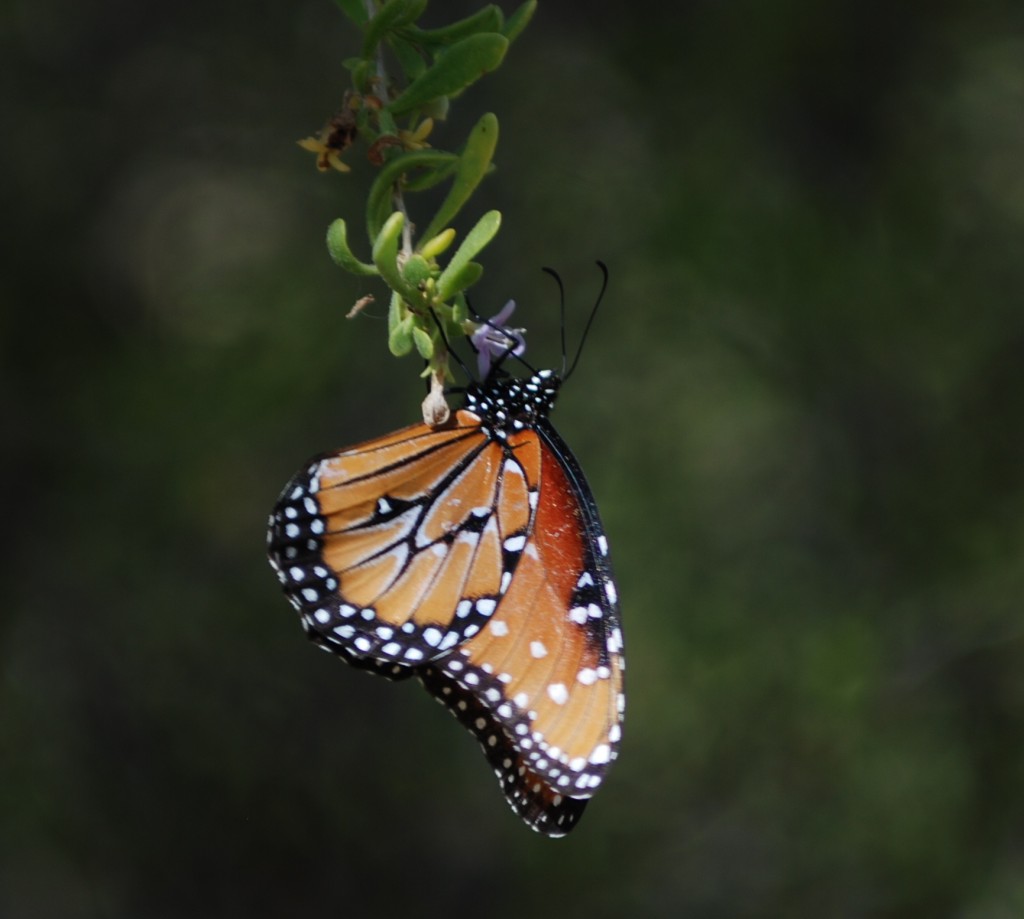
Updated July 2022
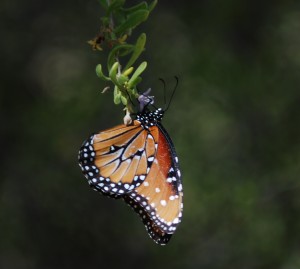 When Dr. Urguhart discovered the Monarch’s winter resting area in 1975, there were one billion of them. Sadly, their population has decreased by 95% since the 1980s.
When Dr. Urguhart discovered the Monarch’s winter resting area in 1975, there were one billion of them. Sadly, their population has decreased by 95% since the 1980s.
By 2012, the population had decreased to half a billion. In recent years, the number of Monarchs spending the winter in Mexico had dropped to 350 million. Then, in 2013, the population crashed by a further 80 to 90 per cent. As a result, only 60 million arrived to spend the winter in Mexico that winter. This is a dramatic decline.
In 2021, the population was near-total collapse. In 2022, they have rebounded slightly. Their population is now about 200,000.
Habitat Loss
In the past, the butterflies had covered an impressive 17 acres (almost 7 hectares) of forest in the Sierra Madre mountains in central Mexico. However, during the winter of 2021, they occupied only 7 acres (2.84 hectares). It is estimated that the Monarch Butterfly needs a minimum of 14.8 acres (6 hectares) to survive.
The migration of the Monarch Butterfly is endangered and might become a thing of the past if something is not done about this situation. For example, there were so few migrating some years that Point Pelee National Park had to cancel their Monarch Festival for lack of butterflies.
Monarchs are counted during Migration
The Monarch Butterflies are counted at several places along their migration route. The Haliburton Highlands Butterfly Count in 2012 had 768 butterflies. The following year they counted only 61. In 2017 they had 238, and in 2018, 671. The numbers are up, but still below 2012 levels and way below the numbers from the 1980s and 1990s.
At the annual Presqu’ile Provincial Park Butterfly Count for 1996 was 8,000. In 2013, they counted a whopping total of three Monarch Butterflies.
The population trend is upward but not enough to ensure their survival.
The Causes of Decline
The leading causes of this dramatic decline are deforestation in Mexico and pesticides in the USA and Canada.
Deforestation in Mexico
When I was at the Monarch Butterfly sanctuary in Mexico, I saw people taking away donkey loads of firewood. The butterflies don’t need the wood on the ground, but people and donkeys traipsing through their resting area will disturb them. It is cold in the upper reaches of the Sierra Madre Mountains. They can survive cold weather by sitting in the trees until it gets warmer. But if they are disturbed, they will fall to the ground and will not be able to fly back up and will die.
The people who live in the villages in this area are poor and need firewood for heat. The government should do something to wean these people off of firewood and get them using some other form of heat. I realize this would be expensive. Another option might be to bring in firewood from some other location. Perhaps they could get help from international conservation organizations or the United Nations Heritage fund. The Monarch Butterfly sanctuary is a United Nations Biosphere Reserve and is therefore supposed to be protected. I don’t know if this means anything or is just a nice name.
Illegal Logging
A big problem is illegal logging. There is not supposed to be logging in the area, but it happens. If a police officer tries to stop them, they will be offered a hefty bribe, which the underpaid police find difficult to resist. To refuse the bribe could mean that they or someone in their family might end up dead. If this place were in the United States or Canada, it would be a National Park, and the butterflies would be protected.
A Sanctuary in Name Only
The area is a butterfly sanctuary, but that does not seem to mean much. When I was there, I saw groups of children on school outings. I think this was simply something to occupy the children rather than teach them anything. There are signs asking people to be quiet, but the teacher encouraged the children to yell to see if they could wake up the butterflies. Also, some children picked butterflies off the trees and ripped wings off them. One tourist from England scolded the children while the guides who work there said nothing. The guides just get paid to guide people through the forest to see the butterflies; they are not park rangers.
Dead butterflies on the forest floor in Mexico
Pesticides in USA and Canada
The problem in USA and Canada is pesticides. Every state and provincial government has a program to eliminate weeds along the edges of highways and other government lands. The Monarch Butterfly lays their eggs only on the milkweed plant. If you break milkweed, you will see it contains a white, milky substance in its veins. The Monarch caterpillars eat only this plant. To wipe out the milkweed plant is to wipe out the Monarch Butterfly.
What Can be Done?
So what can be done about all this? An organization called Monarch Watch is doing their best to save the beautiful Monarch Butterfly. If you live in the Monarch Butterfly’s summer range, you can help.
- Your school class can raise Monarch Butterflies in the classroom. This is very educational and increases the butterfly population.
- You can grow milkweed if you have somewhere to do that.
- You can get involved with tagging the butterflies in the fall.
Information on how to do all of this is available from Monarch Watch.
Links
For decades, it was unknown where the Monarch Butterflies spent the winter. Here is the story of how two researchers spent many years searching for and finally finding them. Click here.
I take a special interest in the Monarch Butterflies because I was raised near Point Pelee National Park, and the butterflies were a big part of my childhood. So a few years ago, I made the trip to Mexico to see them in their winter area in central Mexico. My story and photos here.
Some other links:
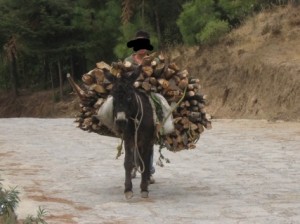
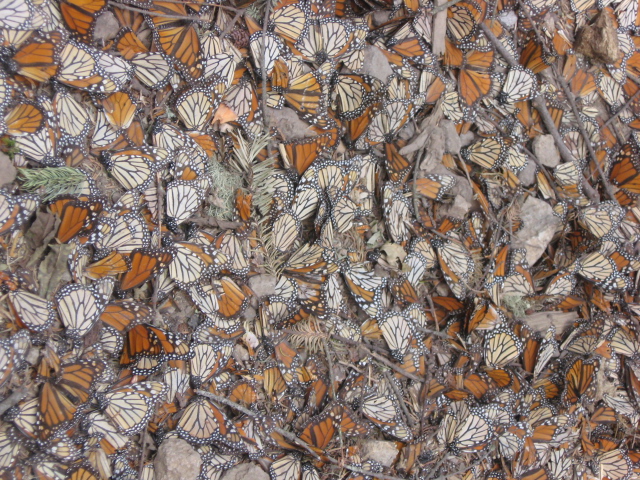
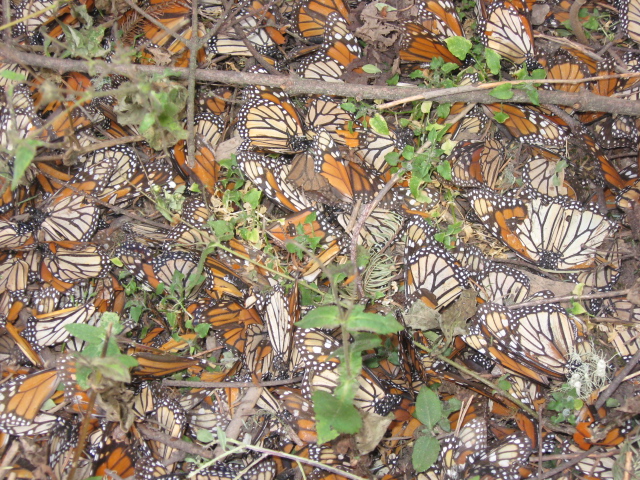
I am Mexican and I feel great shame and sorrow for what happens to these helpless and fragile insects …
when visiting the area in 2011 where the Monarchs arrive , I saw with concern that they were no longer the million million arriving every year.
It is true that between logging, pesticides and climate change is shrinking species
outrageously , but also I must say for the people of Michoacan and specifically the
nearby towns where comes the butterfly, who have organized groups that monitor the entire 24 hours possible area loggers , unfortunately have killed several of these protectors , these farmers spent years trying to protect themselves and the area as he says, is very easy to bribe the police.
The residents of these areas live mostly on economic profits from their global tourism
visit the shrine of monarch butterflies , so do their best to protect them from harm.
Our planet is changing , it’s not the same 50 years , climate change is stalking us , hundreds of species are die , only bees die daily by millions worldwide.
saludos